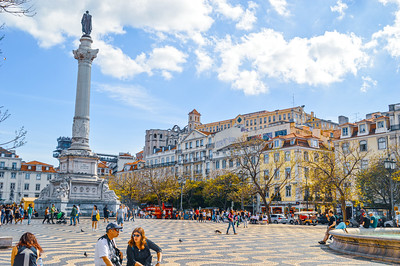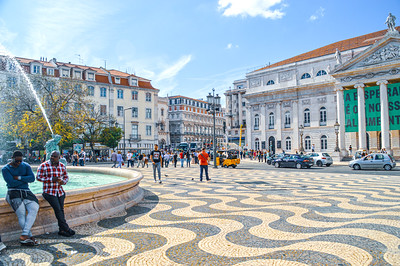About Rossio
The Rossio is the popular name of the King Pedro IV Square (Portuguese: Praça de D. Pedro IV) in the city of Lisbon, in Portugal. It is located in the Pombaline Downtown of Lisbon and has been one of its main squares since the Middle Ages. It has been the setting of popular revolts and celebrations, bullfights and executions, and is now a preferred meeting place of Lisbon natives and tourists alike.
The Rossio became an important place in the city during the 13th and 14th centuries, when the population of the city expanded to the lower area surrounding the Lisbon Castle hill. The name "rossio" is roughly equivalent to the word "commons" in English, and refers to a commonly owned terrain. Around 1450, the Palace of Estaus, destined to house foreign dignitaries and noblemen visiting Lisbon, was built on the north side of the square. After the Inquisition was installed in Lisbon, the Palace of Estaus became its seat, and the Rossio was frequently used as setting for public executions. The first auto-da-fé took place in 1540.
Most buildings around the Rossio date from the reconstruction of the Pombaline Downtown carried out after the great 1755 Lisbon earthquake, which levelled most structures in the area, including the magnificent All-Saints Hospital. Only the Palace of the Independence survived the catastrophic earthquake. The rebuilding of the Rossio was undertaken in the second half of the 18th century by architects Eugénio dos Santos and Carlos Mardel, responsible for the typical Pombaline appearance of the buildings around the square.
After a fire in 1836, the old Inquisition Palace was destroyed. Thanks to the efforts of writer Almeida Garrett, it was decided to build a theatre in its place. The Teatro Nacional D. Maria II, built in the 1840s, was designed by the Italian Fortunato Lodi in neoclassical style. A statue of the renaissance
In the 19th century the Rossio was paved with typical Portuguese mosaic and was adorned with bronze fountains imported from France. The Column of Pedro IV was erected in 1874. At this time the square received its current official name, never accepted by the people.
en.wikipedia.org







